KeepSolid Goals provides you with what’s needed the most for making good business decisions - awareness and clarity. For this, you’ll have available a set of key indicators that you can analyze to get valuable insights regarding your company. Using them, you will be able to make informed business decisions.
Below, we’ll explore some examples of how stats that are provided by KeepSolid Goals can be analyzed to benefit the business decision-making process. We’ll cover the following indicators:
- Key Results (KR) - sub-goals that must be met to promote the business towards reaching its overarching Objective
- Tasks - activities that should help the business achieve a specific Key Result
- Budget - money allocated for a project
- Days - time allocated for a project
Normal project
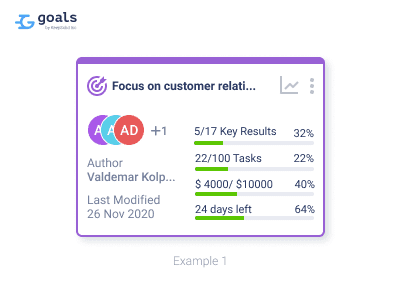
This is a normal state of a project. Achievement of Key Results, the number of Tasks, budget expenditure, and set deadlines are all aligned. The project is going according to plan, no fixes or adjustments necessary.
Project is not goal-oriented?
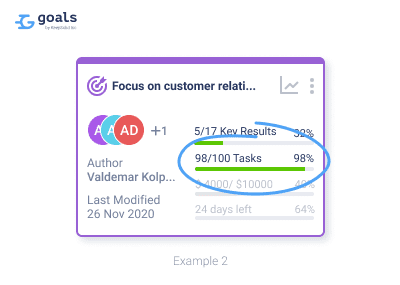
Key Results weren’t accomplished, yet almost all tasks are complete. This contradicts the main idea of goal-oriented management - completing tasks is good only as much as it benefits your objectives.
What this means:
- The tasks were performed (eating up a chunk of our budget), but didn’t facilitate the accomplishment of KRs.
- Most of the less-critical tasks were completed, and the remaining few are holding back the achievement of Key Results.
What to do:
- Find out why KRs were not achieved and why the action plan, or even the goal itself, wasn’t adjusted accordingly.
- Review the remaining tasks to make sure you don’t risk failing to complete them, which would result in missing your KRs.
Missing deadlines?
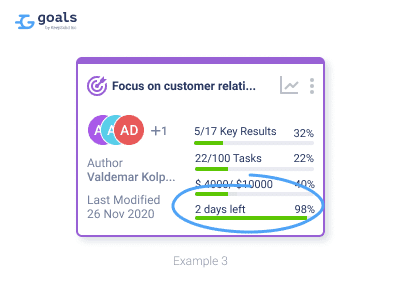
Deadlines are almost due, but our Key Results are far from achieved - we’re likely to fail to complete them in time.
What to do:
- Find out what caused the delay in the completion of Tasks and Key Results.
- Figure out why deadlines or the objective were not updated despite the tendency for lagging was clearly visible for some time.
Overspending?
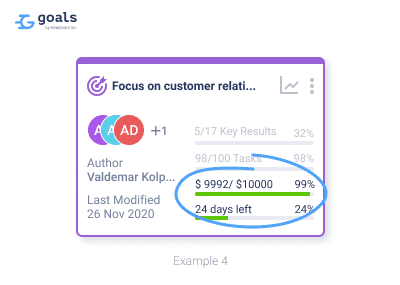
We have already drained most of our budget but still have much of the planned Tasks and Key Results unfinished. We will likely not have enough funds to complete the project.
What to do:
- Check the best-case scenario: maybe it’s just that employees turned to the most resource-intensive tasks first, so they were already completed. This would mean that there is actually no problem.
- Find out what caused the overspending and determine how to adjust the Objective and your action plans accordingly.
Poor estimations?
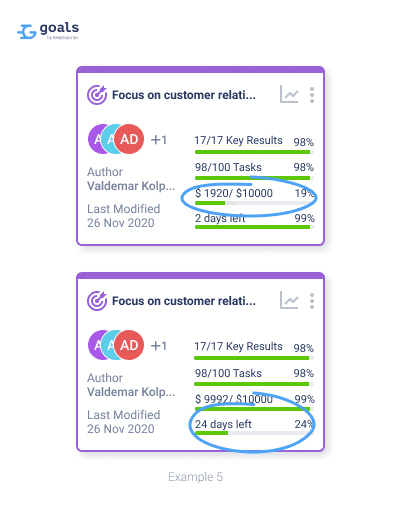
What this means may vary:
- There might have occurred a mistake in budget/time estimations.
- The manager responsible was overly cautious with their budget/time estimations, leading to suboptimal use of company resources.
- Maybe managers found ways to achieve Key Results with fewer resources or employees delivered better performance than expected.
What to do: use this information as a benchmark for future estimations.


